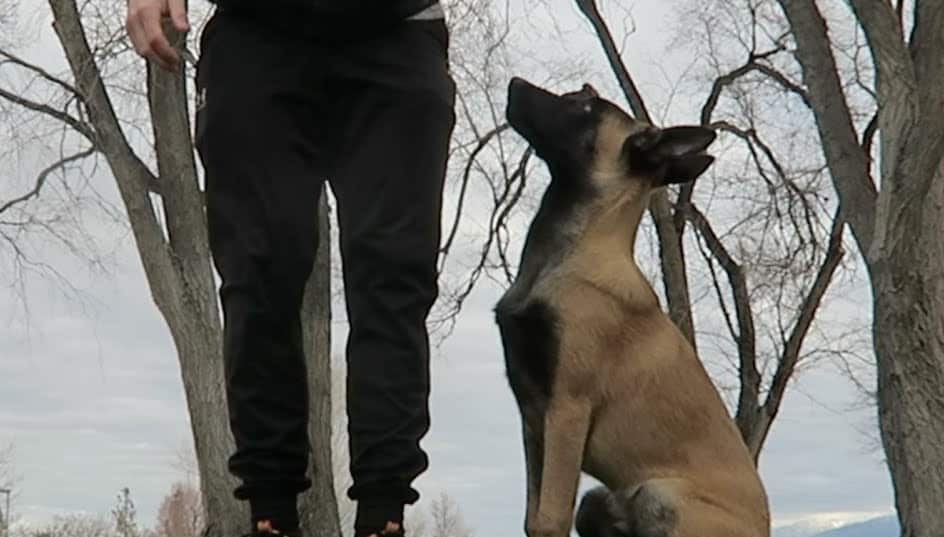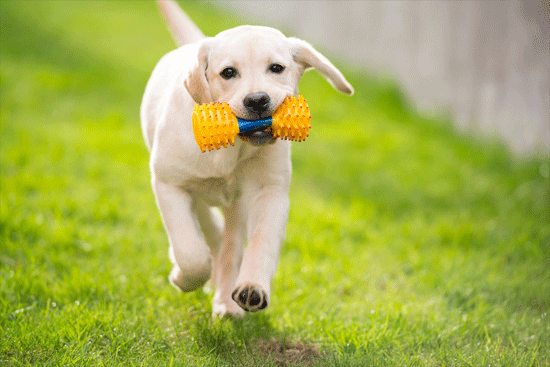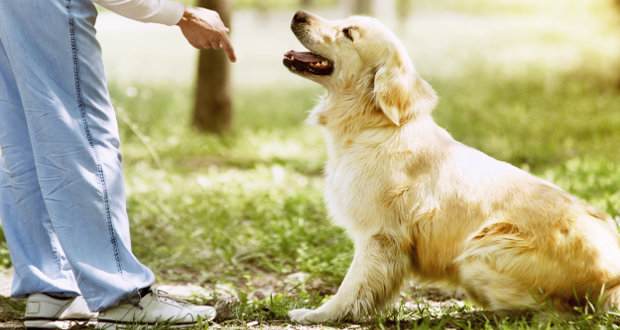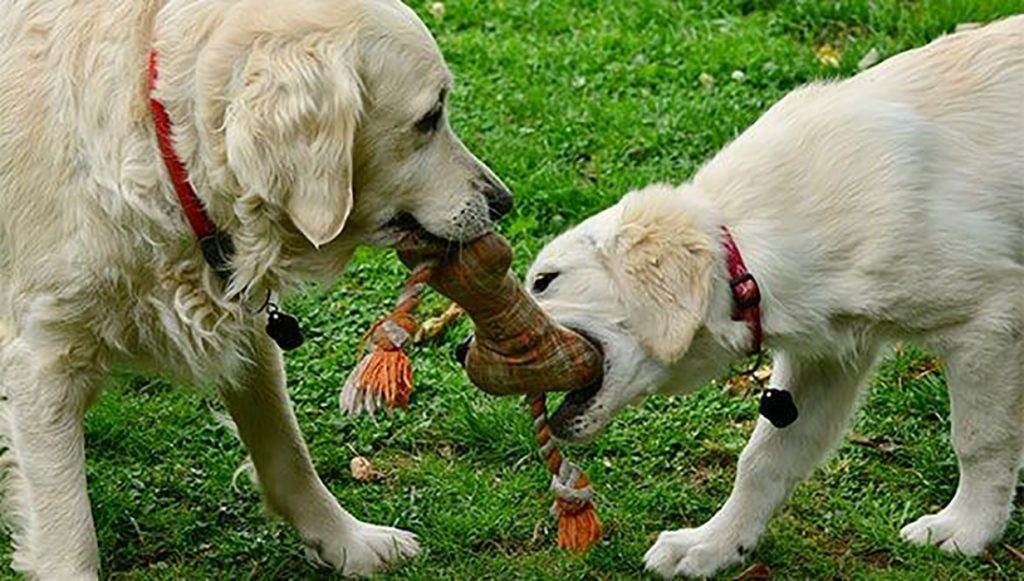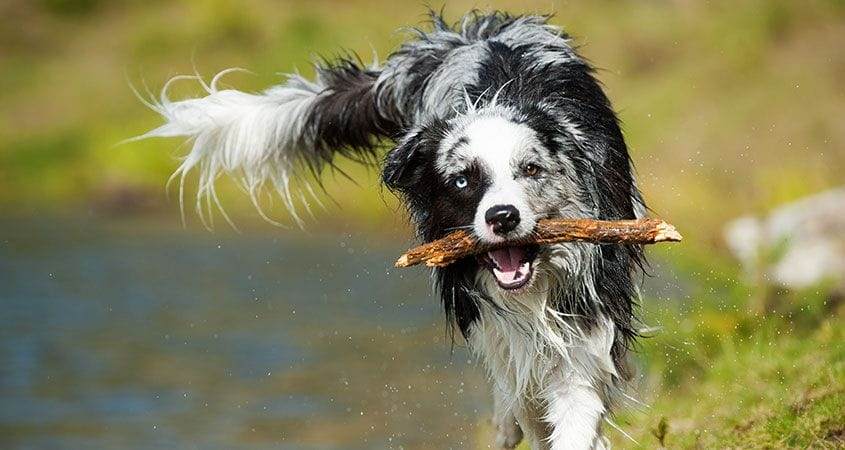When you are house training the puppy, you need to follow this. He will also start to learn behaviors that makes it easy for house training him. The start should be with the help of a crate and creating the schedule for the puppy.
You should also be giving meals to the puppy which are rich in fiber content. The meals make sure that he has call for a poo at the right time of the day.
After using the crate for some time, you will know his time table well and then you can start to take him outside at approximately the same time when he needs to poo.
At our training facility, our instructors get to chat with hundreds of new puppy owners every single month. Today I’m going to tell you about the four most common, little oversights that people have.
They have these issues even when they’re doing everything else right. The information I share in this article will be helpful when it comes to house training.
The ideal age for you to potty train your puppy is when he/she is in between 12 to 16 weeks old. The reason behind this is that, at this age, he probably has control of both his bowel movement and bladder.
Puppy potty training goes a long way in ensuring that your home remains clean at all times.
However, note that puppy potty training duration may differ from one puppy to another. If you get a puppy who has been raised in a cage, then the training may last longer.
Nonetheless, potty training your puppy is doable, and you can change his/her behavior provided you use the proper form of training and give lots of gifts.
Some little oversights can completely de-rail their training. So we’re also going to talk about that today.
How to Train Your Puppy
The following will help you train your puppy to go outside for emergencies:
#1 How Much to Feed a Puppy When House Training
As much as changing his behavior can help a puppy know when and where to relieve himself. The diet also plays a significant role. Similar to kids, the puppy’s digestive tract is still immature. Therefore, every meal he takes should be perfect for his digestive system.
You should identify the proper diet for your puppy depending on his breed and weight. Also, these meals should be divided into three small meals. Snacks can be given in between, especially during training.
Overfeeding him may lead to diarrhea which can turn your house into a mess. Observing your puppy’s stool is also an excellent strategy that will help you know if you are feeding him the appropriate diet.
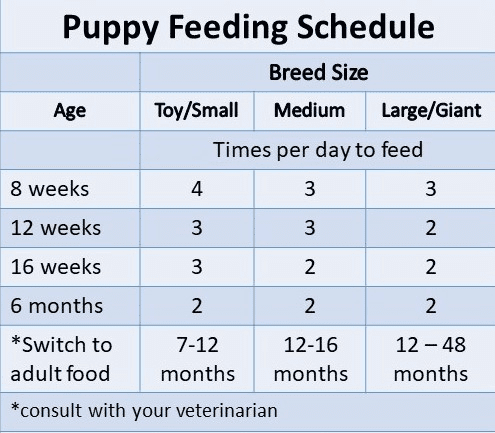
#2 Things to Consider When Potty Training a Puppy Indoors
Let’s take care of the easy one first. And that’s supervision inside. We all know that anytime you’re house training your puppy, you have them out of their crate. Thus you need to be monitoring them closely.
If they sneak away while you’re on your phone and they have an accident in the house, that’s not their mistake. It’s actually your mistake.
So you need to be sure that every moment that puppy is out of their crate, you are engaged with them. You’re watching them closely for any signs that maybe they need to go outside.
#3 Use the Puppy Potty Training Schedule Chart
And that leads to the second thing that I wanted to talk about. That’s the routine of going inside and outside. Before you put your puppy in the crate for any length of time, they need to go outside.
If you come home from work or you come get your puppy and you want to have a play session. Then first you need to immediately take that puppy up and take them outside. They’re most likely to feel like they have an opportunity to have an accident in the house, after they come out of their crate.
And for puppies, a common mistake to make is after a big play session. So maybe you’ve played some tug with your puppy, or played some response to name, or luring them around, or teaching them a new trick, or whatever. Once you’ve done playing that play session, take them outside, let them have a piddle.
Then you can bring them back in and put them in their crate so they can have rest. But it’s really important that after they’ve been up really long and have been really excited, they get to go outside for pee or poo.
You’ve given them the opportunity to go outside so that they don’t have that accident in the house.

#4 How to Handle Puppy When Outdoors
The key to house training your puppy is by being gentle towards him/her. Yelling, scolding or punishing him isn’t likely to change his behavior. You will only be ruining the bond and friendship that you share with him/her.
Puppies are creatures that crave attention and appreciation. Therefore, the moment you praise him for something he does, he will likely do it more often so that you can applaud him.
In this case, when your puppy does the job outdoors, make sure you congratulate him/her. Be quite thorough in your praise.
Do lots of cheering, clapping and give him/her lots of gifts. Don’t forget to use a cleanser that will completely get rid of your puppy’s pee or poop. This will ensure they are not drawn to the same spot by the smell.
#5 Outside Supervision
Next, let’s talk about outside supervision. This is a really important one and this is a very common for people to make a mistake. Even though they think they’re doing everything right. When you take your puppy outside and allow them to go outside for a pee.
Then the last thing you want to be doing is sliding open that back door and allowing them first to go out to the backyard.
If you are taking your dog to outdoor activities like Camping and Hiking. It becomes even more important to clean up their poop.
#5.1 The distractions
Puppies have really short attention spans and the first thing your puppy is going to be thinking about going pee. There would be distractions waiting for the puppy outside:
- If there are leaves blowing around
- There are kids playing beyond the fence
- Maybe there’s a dog in the yard beside yours.
You really don’t want to let your puppy out of that back yard with all those distractions when you know that your intention is for them to go outside to have a pee.
So attach your six-foot leash and head outside with your puppy. You’re going to go to the area that you want them to pee at in the future.
Maybe you have a section of your yard or an area around your building that you want your puppy to go to. While we are at adding a leash to your dog, do check our resource on training your dog to walk with a leash the proper way without pulling it.
#5.2 Making Your Puppy to Pee/Poo Outside
And you’re going to head out directly to that spot and stand totally still. You’re not going to engage with the puppy. You’re just going to let them go out there and find their spot and then have a pee.
Now, if they still fail to have a pee, even if you’re standing out there with them. And you’ve been totally quiet then it’s not uncommon for a puppy to all of a sudden, have this burst of energy.
So, the best thing you can do at that point is to scoop your puppy up. After you’ve given them a long time to have their pee and you haven’t been engaging, you’re just going to scoop them up and take them inside.
You’re going to put them right back in their crate and close that door just for a couple of minutes.
Once your puppy realizes that it’s time to play by showing his excitement to you, you’re going to take your puppy back out of that crate and straight outside, doing the same process as before.
It’s really important that your puppy doesn’t start to learn that every time. Your puppy needs to know that every time you’re taking them outside to go has a pee, that they have a job to do.
Now if you have a puppy who’s still having accidents inside their crate, then it’s time to take a look at what’s inside their crate.
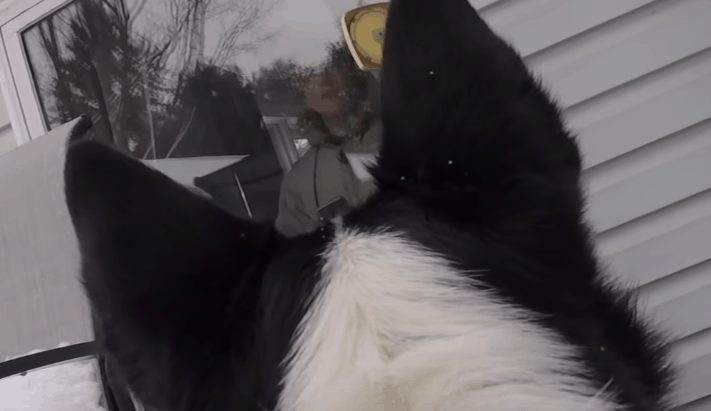
#6 Puppy Potty Crate Training Tips
Puppies can be real opportunists. So if you put your puppy in a crate with a huge bed or a great big fluffy blanket, they’re way more likely to have an accident on that.
If your puppy is going through the house training process, it’s best to not have anything in their crate that they can pee on and then stuff to the side. Dog training pee pads are also useful when your puppy is using a crate.
I know that we all think that we need to have a great big bed for our puppy so that they’re comfortable. But nowadays, the plastic crates are really comfortable on the bottom, very flat, and wire crates also have a plastic tray.
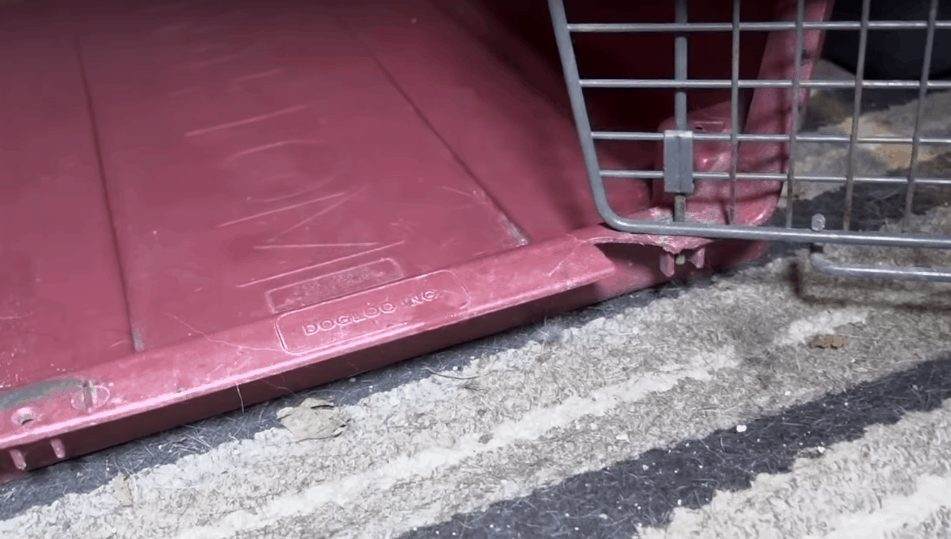
But make sure that there is a flat surface on the bottom of your puppy’s crate before you decide to take their bedding out. For us, our puppies sort of earn the opportunity to have some bedding after they have grown up and learned.
Once they’ve had a couple of weeks of success, we’ll put in a beach towel or something like that.
What Problems Can Arise When House Training the Puppy?
As with all other forms of dog training, house training also has its fair share of challenges. Irrespective of how thorough you are in potty training your puppy, there are a few chances of you running into some issues.
According to Dr. Burch, when you notice your puppy soiling in your house frequently. Then there could be a physical/medical problem associated with it. Therefore, the first step should be seeing a vet. If the vet rules out any medical conditions, then you can proceed to behavior modification.
Below are the most common problems you may encounter when house training your puppy, and remedies to resolve them.
1. Your lapdog is piddling all over the house
This is a common habit, especially amongst toy dogs. The most efficient way to beat this problem is by setting up several indoor potty spots in your house.
Ensure that you train him/her to always rush to the potty spots whenever he needs to relieve himself. The more consistent you are in your training, the faster your puppy will learn.
2. Your puppy is peeing on the same spot where he had an accident
As mentioned earlier, if you don’t properly clean the spot where your puppy had an accident. Then chances are, he will always see this as a prime spot. To counter this problem, make sure you use a cleaner that gets rid of both stain and odor. An enzymatic cleaner usually works wonders.
3. Your puppy messing the house after she had started learning where to potty
Never declare victory too soon. One mistake most dog owners do is to forget about puppy potty training when they start seeing their puppy learning where to and not to relieve themselves. But, to efficiently learn housetraining, you need to be very consistent. Make sure that your puppy follows the schedule strictly.
4. The puppy is soiling his crate
According to professional vet officers, this habit is common amongst dogs who have been confined for an extended period. They are thus used to soiling in their kennels.
To change the behavior of such a dog, you should first check his diet, create a peeing/pooping schedule, and give him frequent outdoor trips. Don’t forget always to clean the areas defecated on thoroughly.
Do’s and Don’ts of Puppy Potty Training
- Refrain from being aggressive when you catch your puppy doing it in the house. Fear is usually not the best way to train your puppy.
- Find a way to show him that he has done something wrong. For instance, clapping or whistling.
- Yelling should be completely off the list. The intellect of a puppy isn’t usually designed to read anger or disappointment.
- Spending time outdoors during training and play time can significantly help reduce the chances of a puppy relieving himself in the house.
- Always use an enzymatic cleaner instead of a detergent with a strong odor.
Learn More With the Help of Video
Conclusion on Fastest Puppy Potty Training Method
Now that you are familiar with all you need to know about puppy potty training, you are probably wondering how long it will take? Well, the duration does vary from one puppy to another. Factors such as age, methods used, consistency and the learning history have a role to play.
There are some who might learn in two or three weeks, whereas others might take longer. However, if you have decided to potty train your puppy, then you need to be very patient and understanding.
No matter how long it takes, one thing you can be assured of is that with potty training, your puppy will eventually learn.
References
- https://digitalcommons.csumb.edu/cgi/viewcontent.cgi?article=1012&context=writingwaves
- https://books.google.com/books?hl=en&lr=&id=__HNZJ5LRK4C&oi=fnd&pg=PR7&dq=Potty+Train+a+Puppy&ots=w0UbrTF7ss&sig=1McURbdL7YNjGfaaQslB5wWih5g
Table of Contents

